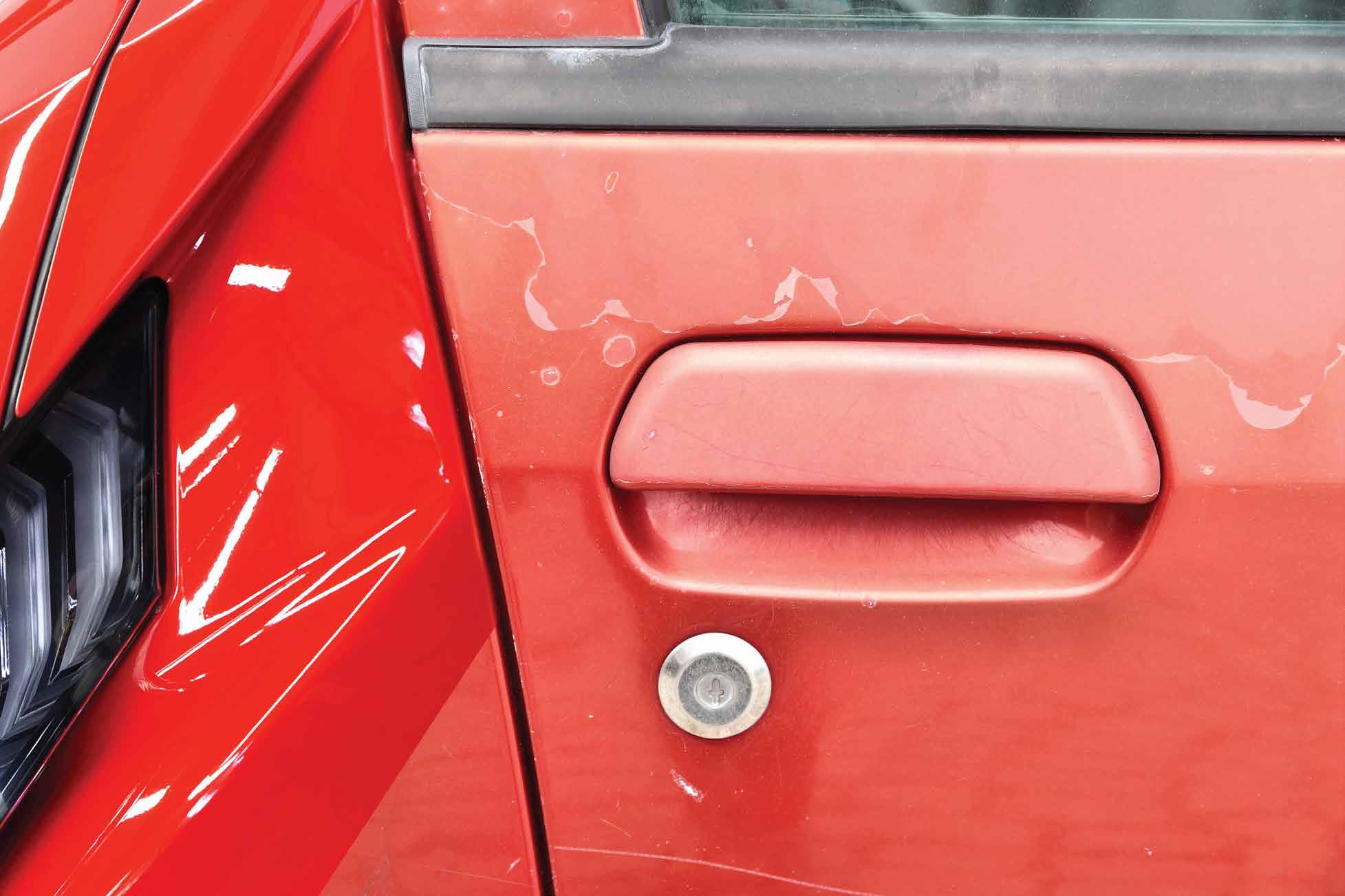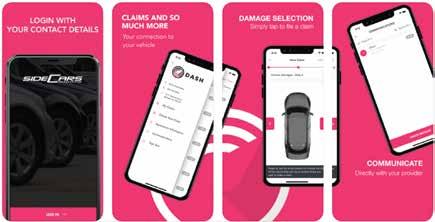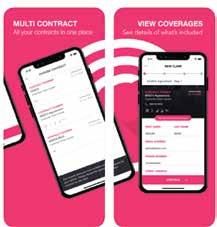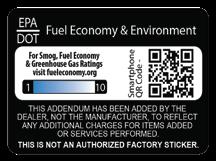

SideCars, Inc. is the parent organization of TruWarranty and ExoGloss, and has been administering reinsured








SideCars, Inc. is the parent organization of TruWarranty and ExoGloss, and has been administering reinsured



















Is it possible to install and deploy remotely?
Absolutely. Installation is just an electronic form change, and there’s little training needed to mirror your existing processes.
Is ExoGloss available in all 50 states as a hybrid dry-wet warranty?
Yes, ExoGloss is nation-wide and also non-cancellable. Is ExoGloss compliant?
Yes, everything we offer has been reviewed by the compliance department at our A- rated insurance underwriter.
How does my F&I Department benefit?
There are several ways. In particular, the addition of a 12-month ExoPreload makes the appearance conversation easier for F&I managers to up-sell to a full 7-year program.

Is preloading legal or illegal? The answer, of course, is “ yes” – it just depends on how you do it. Before we parse this topic, let’s remind ourselves of the Guiding Principles of Compliant F&I:
• Be truthful • Be transparent • Be reasonable
• Document every step of the process • Bef riend a lawyer
Because preloads need to be disclosed somewhere, let’s begin with the addendum sticker. In the beginning (1958, anyway) was the Monroney label, that mandatory factory-installed sticker on every new car that sets forth MSRP, standard equipment and options, and average fuel economy. Some time later, the first dealer thought of adding an addendum sticker that looked just like the Monroney label. The idea, one assumes, was to create the illusion that the addendum sticker was factory-mandated, and the products listed thereon were somehow as mandatory as the engine displacement identified on the Monroney label.

See Guiding Principles 1, 2, and 3, above.

To be clear: in order to be transparent, any preloads need to be disclosed right up f ront and in a manner that is not confusing or misleading. An addendum sticker is a fine way of doing that. Just be sure the sticker doesn’t look like a continuation of the Monroney label. Different colors, fonts, and the dealership logo are ways to accomplish this. Better still, use all three.

Preloaded products should be individually listed and priced. Price them as if they were being sold individually in the F&I box, then include a discount for purchasing the bundle (if allowed in your jurisdiction). You need to build value. This is one way to do so Here’s an example:
Add a final disclosure that states the obvious: “Items listed are optional and subject
customers by implying the preloads are mandatory. This is a car deal – everything’s
build value instead. And never, ever try to lever the preload
bedliner, but it will take 16 weeks for delivery”).

Add a final disclosure that states the obvious: “Items listed are optional and subject to negotiation ” Do not hornswoggle customers by implying the preloads are mandatory. This is a car deal – everything’s negotiable! Don’t try to hide behind a sneaky tactic; build value instead. And never, ever try to lever the preload into sales pressure (“Sure, you can get the truck without the bedliner, but it will take 16 weeks for delivery”).
Preloaded products may be either “hard adds” or “soft adds ” What’s the difference? Hard adds are items actually attached to the vehicle, such as a spray on bedliner on a pickup truck or a Bose eight-speaker stereo system. Hard adds increase the value of the vehicle itself. Soft adds do not. The distinction is crucial.
Because soft adds (service contracts, etch, key replacement, etc.) do not enhance the value of the vehicle itself, their cost should not be included in Line 1 of the retail installment sale contract. Why ? Because Line 1 sets forth the cash price of the vehicle, plus accessories (meaning hard adds), taxes and mandatory fees. In other words, the value of the collateral. Overstating the value of collateral, once the RISC is purchased by a finance source, can be construed as bank f raud.
Don’t do bank f raud.
Soft adds belong in Line 4, “Other Charges Including Amounts Paid to Others on Your Behalf ”
What about “squishy adds,” like paint and fabric protection? Something – a chemical treatment - has actually been added to the vehicle. Because the bulk of the value is the guarantee backing up the chemicals’ performance, I would treat them as soft adds. But in case of doubt, contact your bank rep and ask Document the response (Guiding Principle 4). And once documented, run it past your lawyer – who wants to trust legal advice f rom a bank rep? See Guiding Principle 5.
Why the care to properly disclose preloads? Because if you don’t, your preload program could be construed as payment packing.
Don’t pack payments.
The most succinct official definition of payment packing goes back to a 1999 resolution of the National Association of Attorneys General (“NAAG”):
“Packing” is the deceptive practice of misrepresenting monthly payments to consumers during auto sales and lease negotiations in order to facilitate the sale of automobile related products and services ”

Implicit in NAAG’s definition of packing payments is the necessity of an accurate monthly payment. And that payment must be based on the actual cost of the vehicle, plus taxes and mandatory fees. If the vehicle includes preloaded products, those products must be unambiguously understood and agreed to by the customer
If there is one fixed star in the F&I heavens, it is this: customers must be presented with a payment that is accurate and based upon a representative term and APR. What term? Your dealership’s actual current average term is best. The national average is also defensible (69 months as of this writing). Reasonable and common terms can work (say, 60 and 72
months). But using a 36- or 48-month term when no one in your market finances at those terms is not defensible, and creates a deceptively high monthly payment quote.
What APR should you use for first pencil quotes? Either the 90-day rolling average for your store (which can become unwieldy and fall into disuse) or, more simply, your captive finance source ’ s Tier 2 rate. Of course, once a customer ’ s credit is pulled (with the customer ’ s express permission, duh), the actual APR for which the customer qualifies should be used.
Assuming the APR and term are accurate and representative, what is the amount to which they are applied? In a transaction with no preloads, that’s easy: the vehicle alone (with taxes and fees). But in a transaction with preloaded items, the base payment would include the price of those items. The inclusion of those items and their price must be clear and unambiguous.
It is a best practice to get the customer ’s signature near that disclosure to confirm understanding and consent. In the absence of a clear disclosure and evidence of understanding and consent, you have – at least – the appearance of payment packing.
How can you demonstrate that a transaction was on the up-and-up? One way is to list two payments on the first pencil: “base vehicle only” and “ vehicle as offered” (which would include the preloaded products). Don’t fear the payment differential – embrace it and build value.
But two payments at the same APR and term could itself seem confusing, and confusion is the very thing we ’re trying to avoid. One large dealer group permits a customer signature on the addendum sticker, buyer ’ s order, or worksheet to demonstrate understanding and consent. The point is to unambiguously confirm that the customer knew exactly what the customer was getting.
Once the process gets to the F&I menu presentation, be sure to (accurately) list the vehicle price with the preloads (if accepted by that point) as the starting point. On any accept/decline acknowledgement sheet the customer signs at the end of the menu presentation, be sure the accepted/declined options are identified as additional options. This will highlight the fact that the preloads were included in the transaction before the menu presentation began.
Applying the Guiding Principles of Compliant F&I, here are the specific steps to take to reduce the risk of packing payments when preloading products:
1. Disclose that the preloaded products are dealer-added options and subject to negotiation.
2. DO NOT include soft adds in Line 1 of the RISC until you ’ ve checked with your bank rep and local attorney
3. Clearly disclose the inclusion of the preloaded products in the first pencil – and get the customer ’s signature to document understanding and consent early in the process.
4
. Don’t gouge – be sure the preloaded products are priced appropriately, perhaps at a meaningful discount below what they would cost individually if purchased separately
5. If the product is a hard add and it’s on the addendum sticker, be sure it’s actually on the vehicle!
6. Review the Guiding Principles of Compliant F&I.
7. Memorize Guiding Principle 5.



